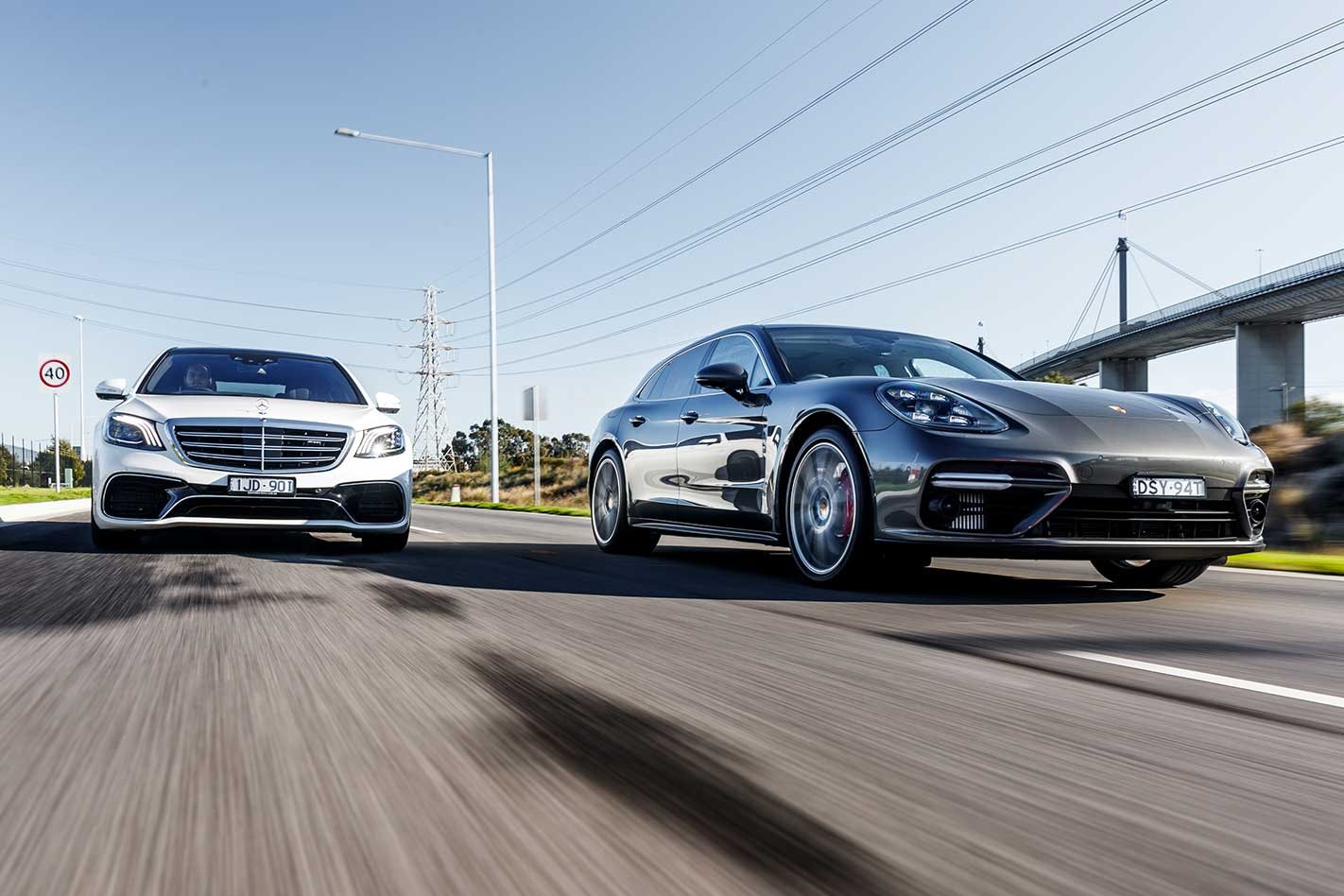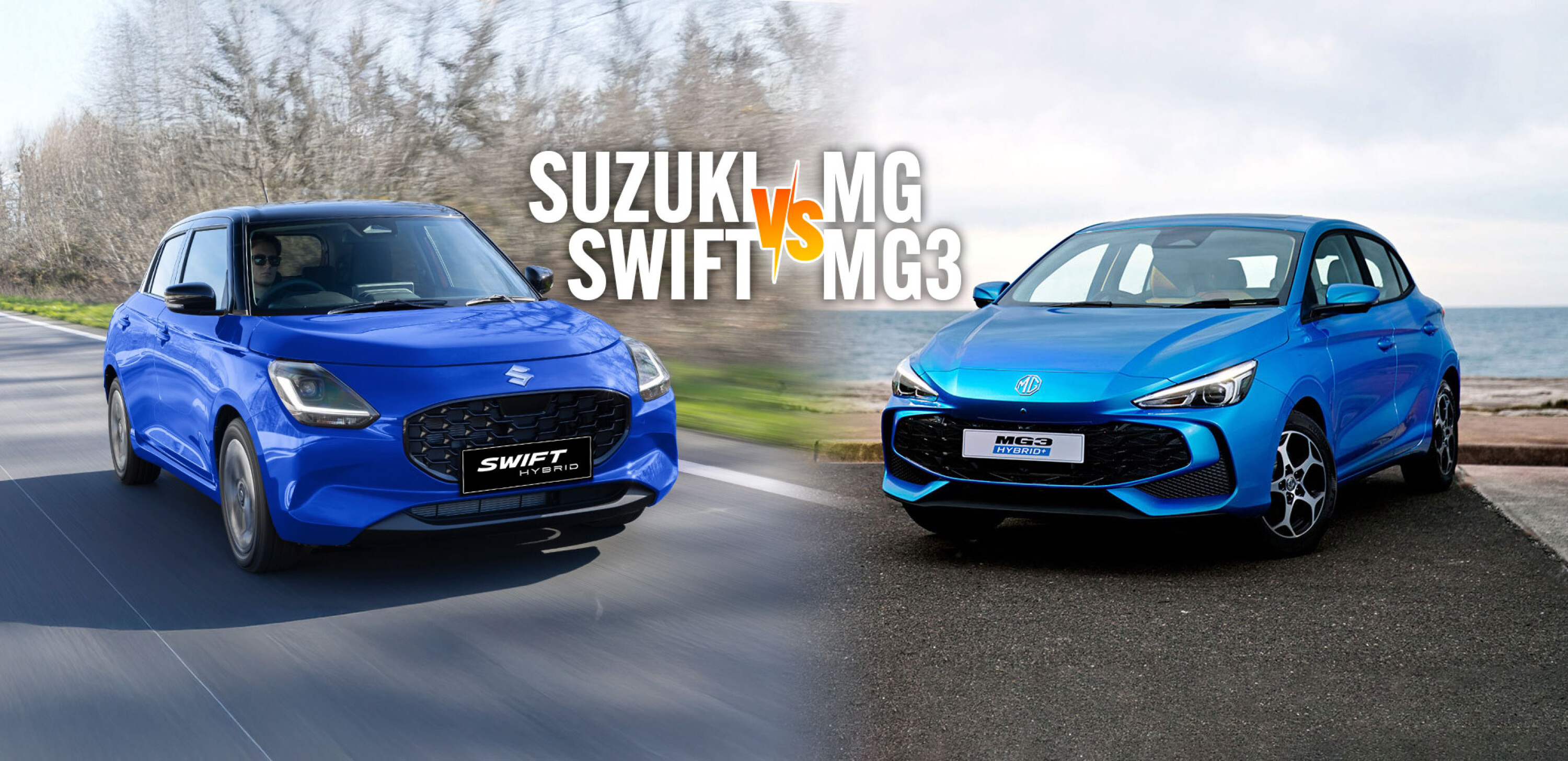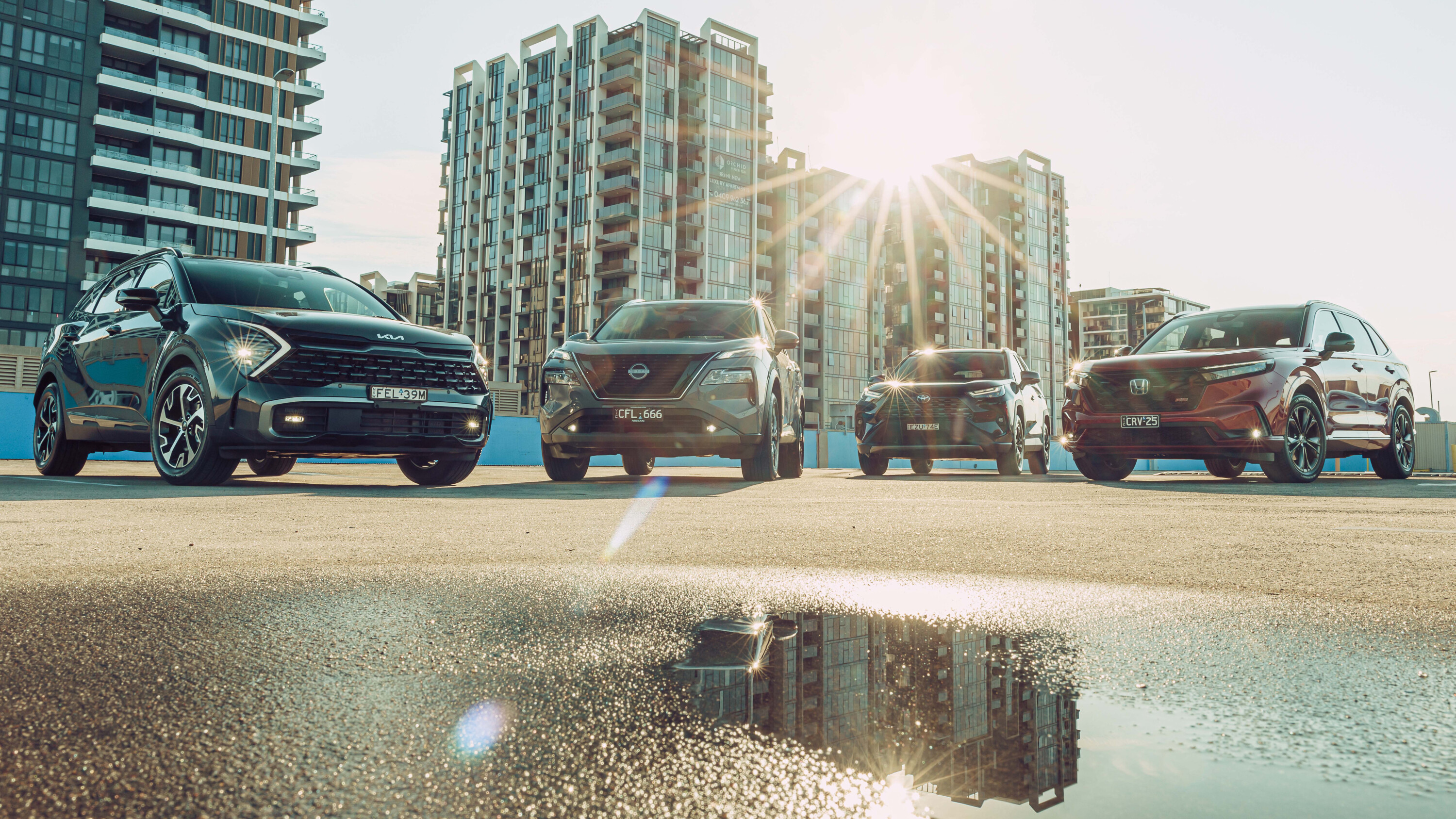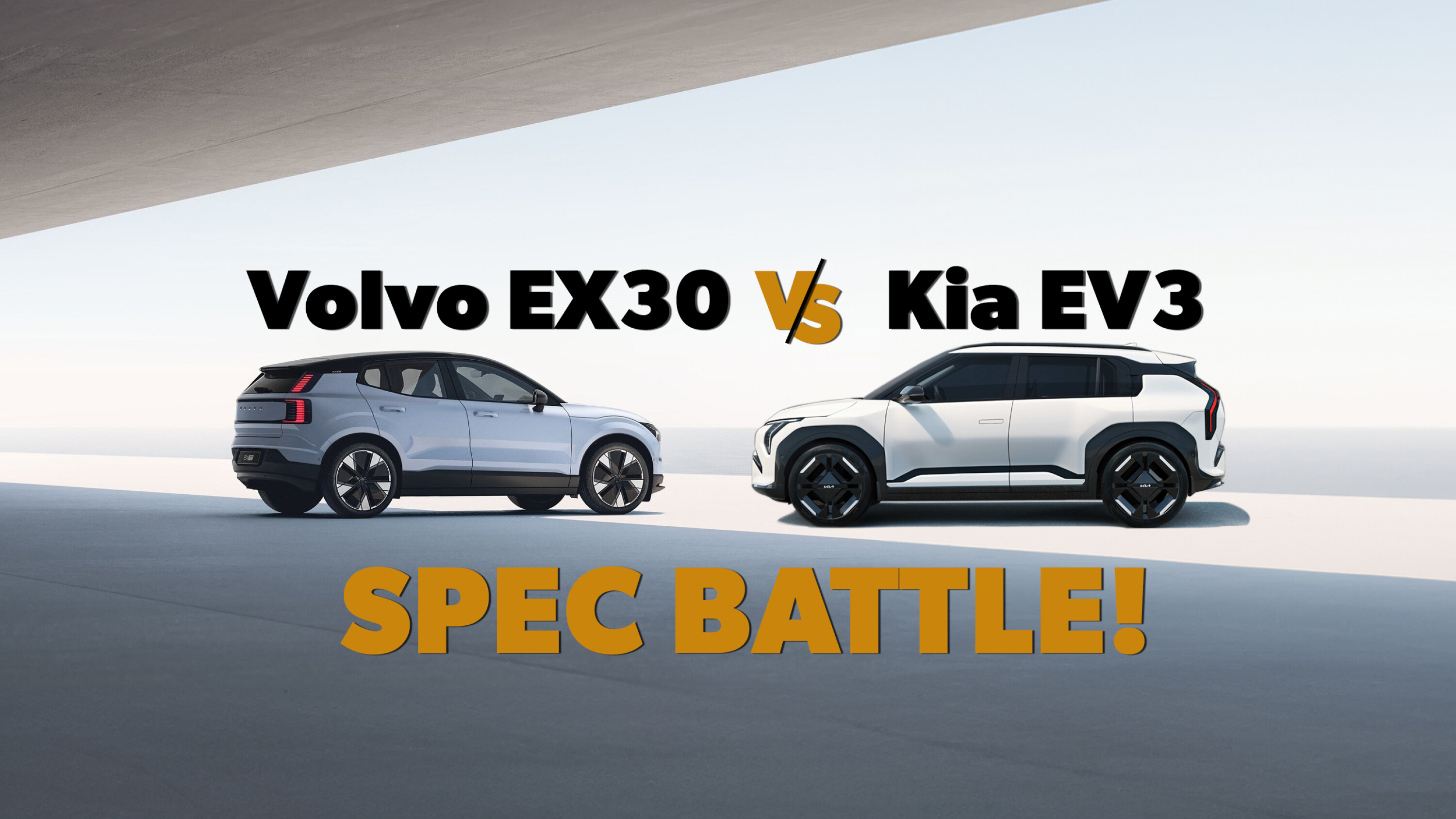Rationale disappeared roughly $250,000 ago. No one needs a 300km/h limousine, nor does anyone need a family wagon capable of zero to 100km/h in under four seconds.
However, in this exclusive market wants far outweigh needs and there are people out there that want those criteria met, hence the existence of the Mercedes-AMG S63 L and the Porsche Panamera Turbo Sport Turismo.
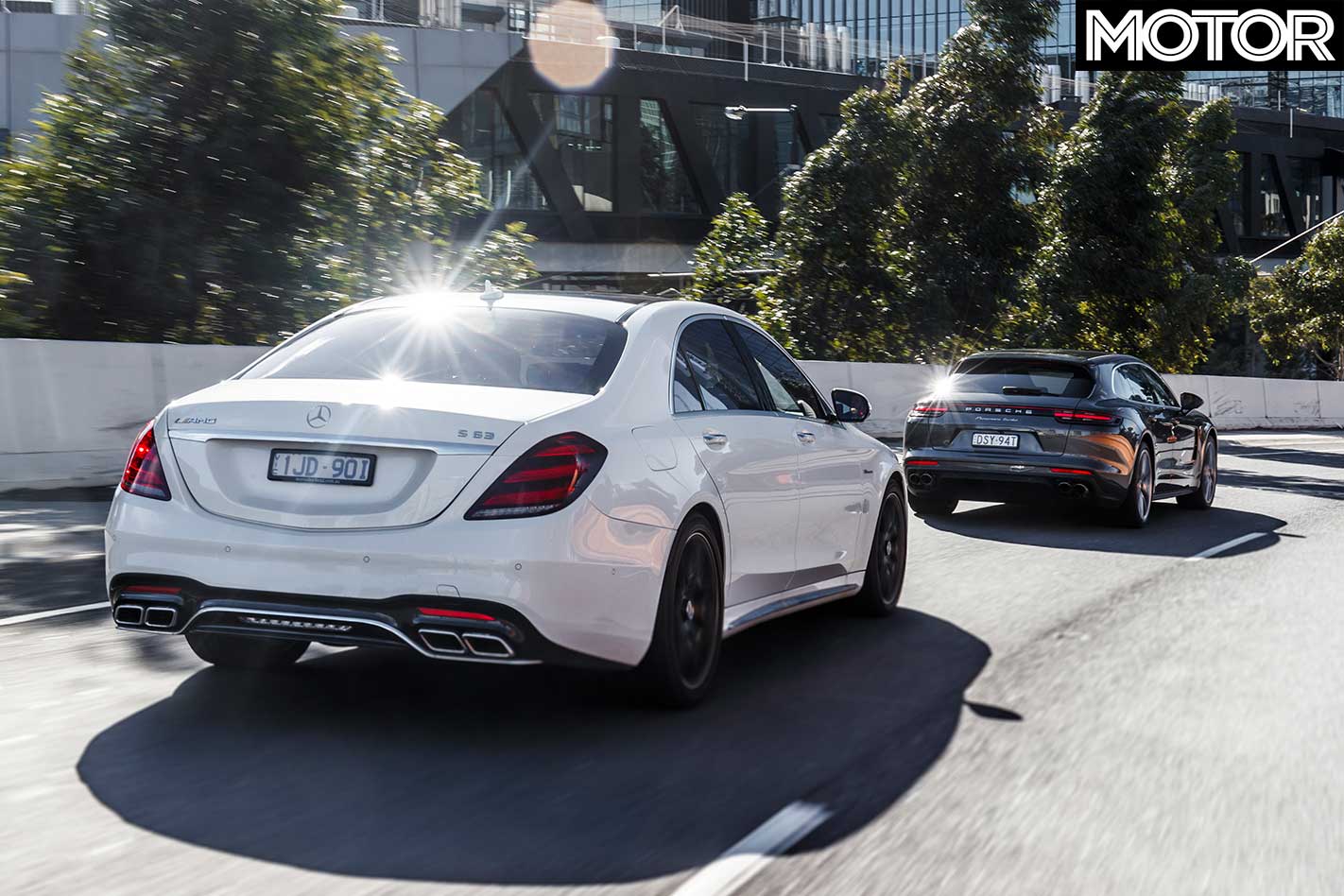
Neither of these models will be big sellers and perhaps at first glance they don’t appear to be natural rivals, but their similarities are more numerous than their differences. Each must offer the ultimate in performance, luxury and technology, cosseting or entertaining its owner or driver as the mood dictates. As such, it seems reasonable to assume those with the wherewithal to be shopping with a $400,000 cheque will at least window shop the pair.
Despite its familiar looks, the Mercedes is the newer of the two. Fresh from a mid-life update, the W222 S63 hides drastically different mechanicals beneath its nip-and-tucked styling. AMG’s 4.0-litre ‘hot-vee’ twin-turbo V8 replaces the old 5.5-litre bi-turbo bent-eight and has two extra gears to work with, AMG’s trademark wet-clutch auto now housing nine ratios instead of seven. Not that it really needs them, as despite the drop in capacity power increases to 450kW (up 20kW) with torque remaining at 900Nm, but produced over a wider range.
Porsche’s similarly specced V8 can’t compete, though with 404kW/770Nm it’s unlikely to feel too wanting, especially attached to an eight-speed dual-clutch gearbox. The two engines are separated by just 14cc, but the Panamera’s has a much higher compression ratio (10.1:1 versus 8.6:1 for the AMG) and is perfectly square in contrast to the S63’s long-stroke layout.Nonetheless, the Porsche’s lower outputs and hefty 2035kg means it burbles into battle with 199kW/tonne to the Merc’s 228kW/tonne.
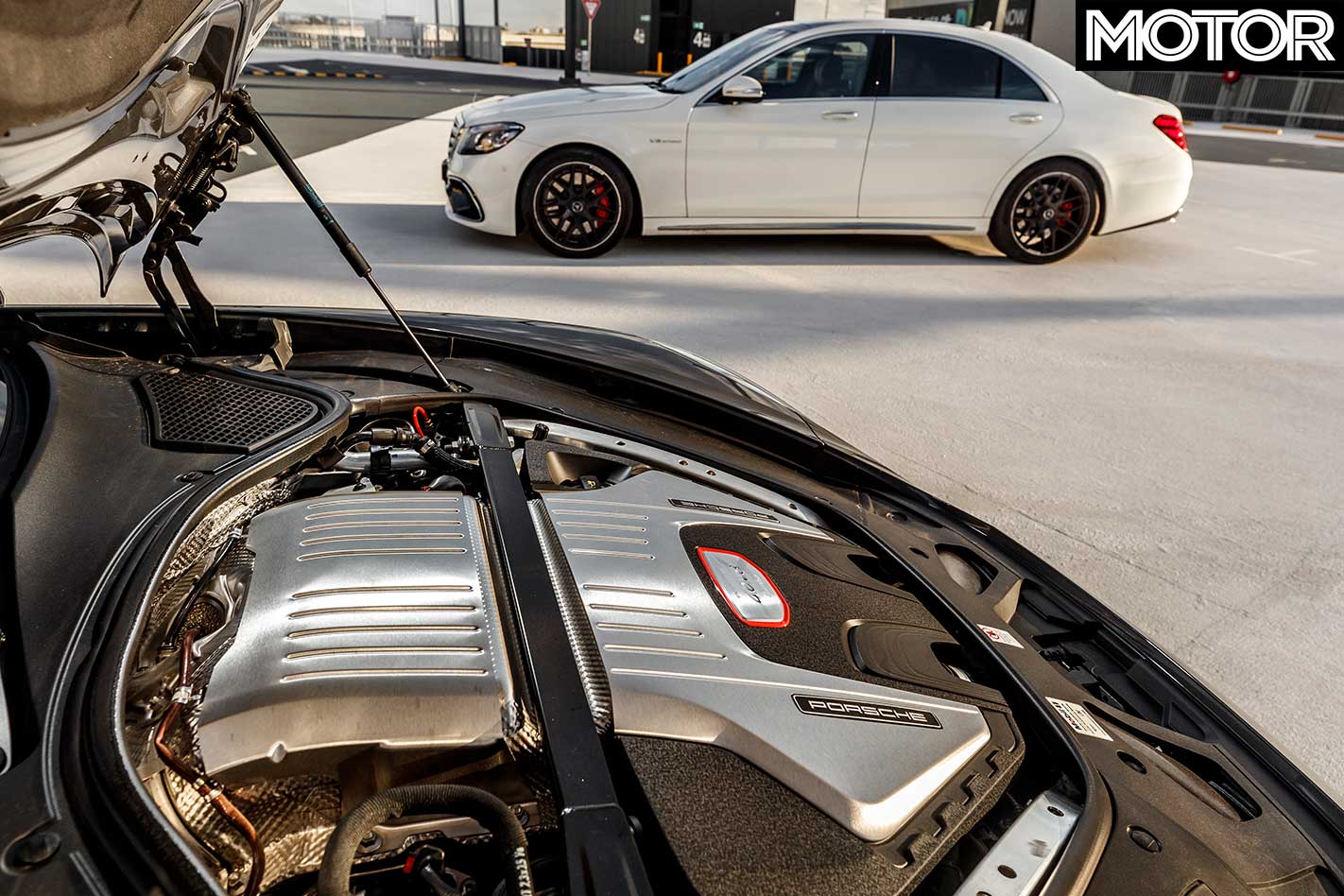
Porsche’s trump card is all-wheel drive. A full-blooded Panamera Turbo launch is a do-before-you-die experience; it must very nearly register on the Richter scale. Outright supercars are quicker, but the sheer force and ruthless efficiency required to push over two tonnes to 100km/h in 3.38 seconds (smashing the official 3.6sec claim) has to be felt to be believed. No skill is required, your only job as a driver is to choose the grippiest bit of tarmac and hold on.
The super-short first gear is merely used to catapult the car from the line. Launch control effectively dumps the clutch at over 5000rpm, instantly spinning all four wheels. On a perfect getaway second gear engages right in the meat of the torque curve and you’re on your way to an 11.49sec 0-400m time at 193.88km/h – it’s an awe-inspiring display of engineering.

Unbelievably, the Mercedes is even faster. Not against the clock, of course. Left-hand drive S63s are all-wheel drive, but those in right-hook are still limited to rear-drive and there isn’t even a limited-slip diff.
As such, the AMG can’t hope to match the Panamera off the line, though its Race Start launch control does a remarkable job of channelling its enormous grunt, 0-100km/h flashing by in just 4.18sec. It’s not as consistent as the Porsche and there feels to be a furious struggle beneath you, the car developing a slight lateral oscillation as it thunders down the strip, which is presumably the effect of 900Nm.
That enormous torque also enables the monster Merc to hunt down the Porsche at a rapid rate once rolling. Eight-tenths in arrears at 100km/h, by 200km/h the S63 is a tenth in front and though it needs 12.04sec to complete 400m, it crosses the line at an incredible 198.22km/h with seemingly no intention of slowing its charge.
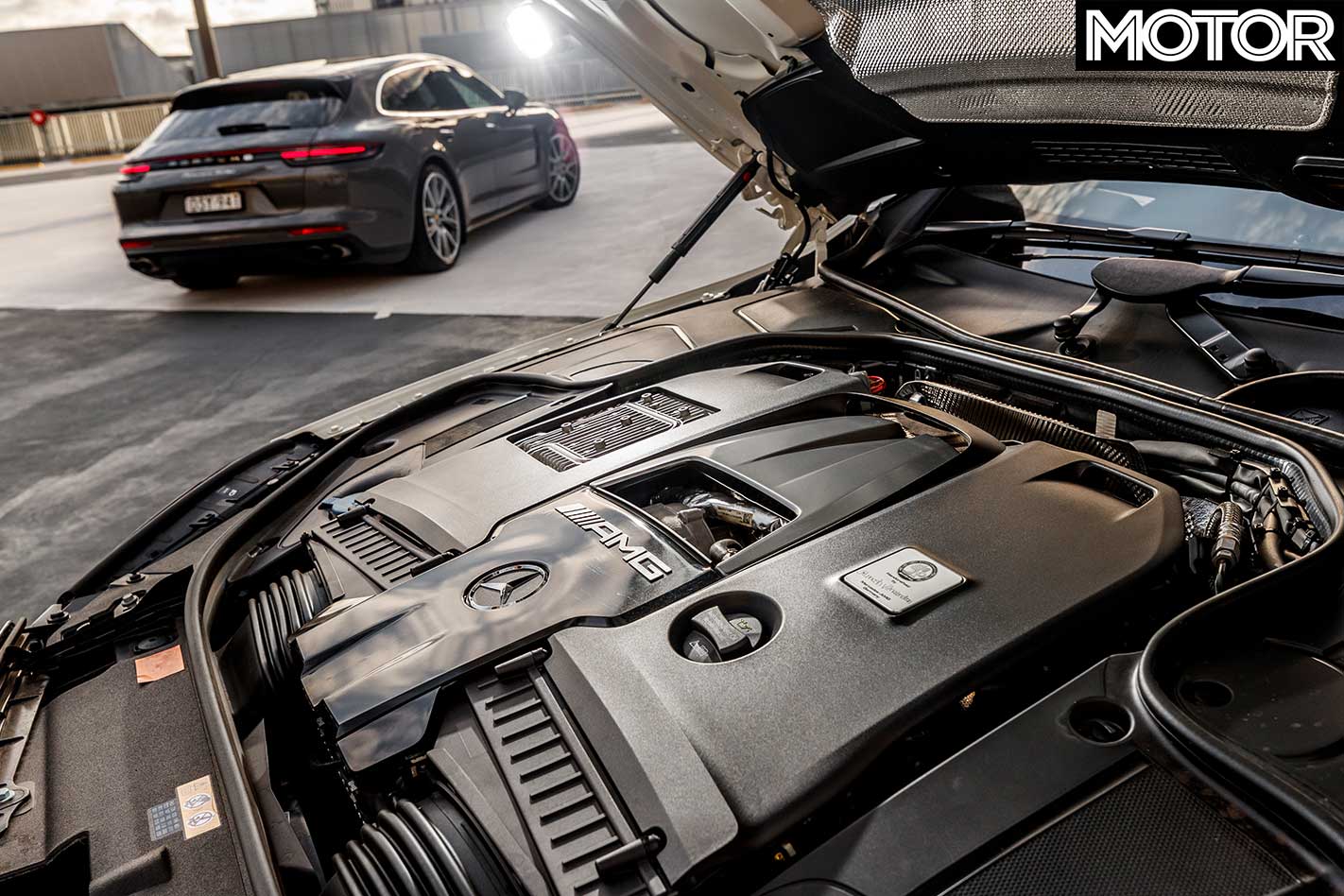
This super limo is one of the most relentlessly accelerative cars I’ve ever driven and feels as if it would breeze into its 300km/h limiter, a speed that requires just 3800rpm in ninth gear. Flat out, the Panamera edges it, limited by air resistance to 304km/h, but it’ll take a while to close the gap.
The engine dominates the S63, but only if you want it to. In Comfort mode it hums away in the background, using as few rpm as possible, sometimes dropping to just four cylinders, other times disengaging from the transmission to save precious fuel in ‘sailing mode’.
Click the Drive Select dial to Sport Plus, however, and it becomes a snarling, backfiring monster. The new 4.0-litre revs harder than the old 5.5 and the exhaust emits deep, artillery-like booms and cracks on the over-run, which along with the V8 bark on downshifts provide a stirring soundtrack to every braking zone.
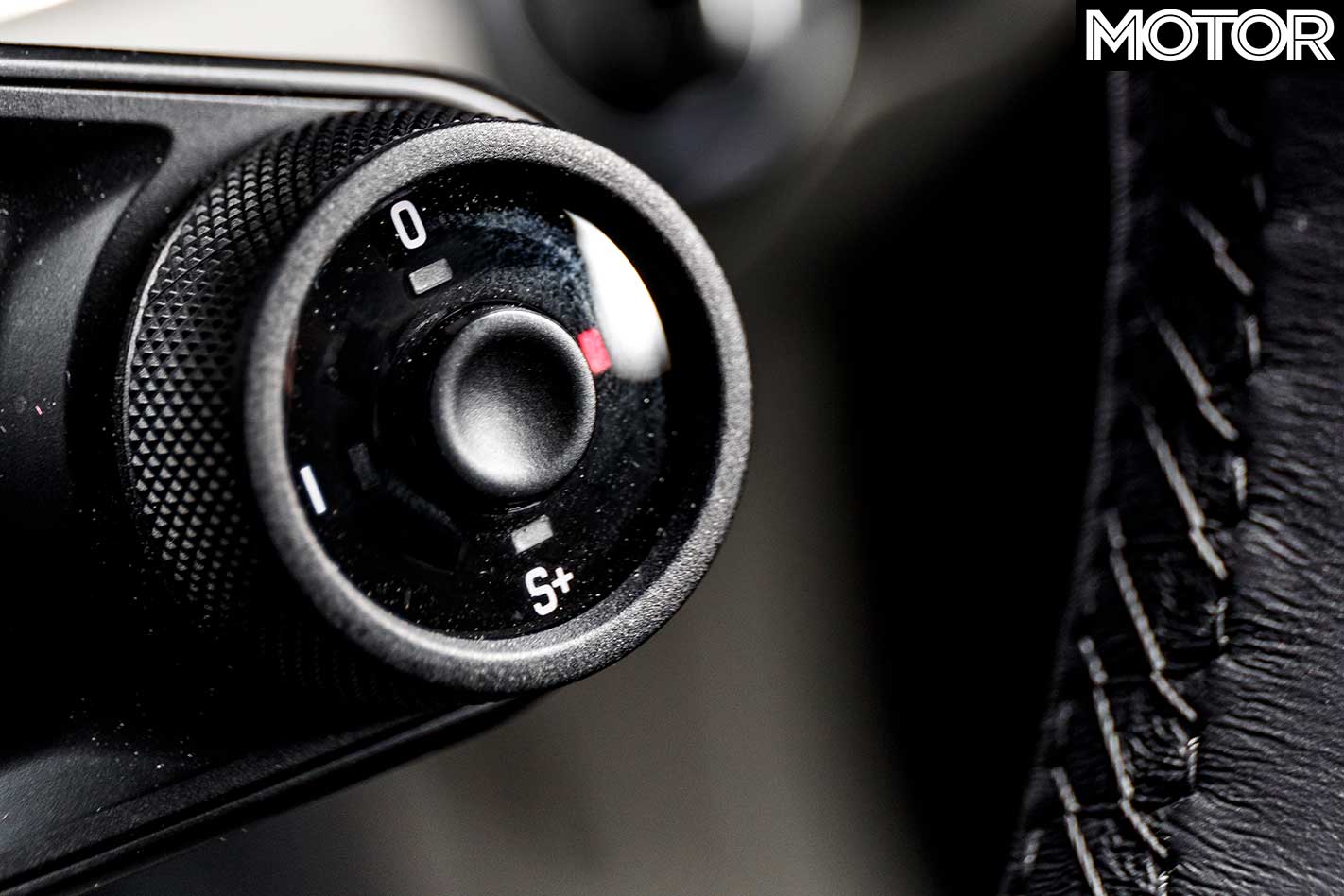
It makes the Porsche feel a bit… sensible. Despite $6950 of optional sports exhaust, the Panamera’s 4.0-litre never extends beyond a muted growl; it’s a nice noise, there’s just not enough of it, even with the mode switch (part of the $4790 Sport Chrono Package) set to Sport Plus.
In isolation the Porsche’s V8 is a monster, buttery smooth with enough punch to pin your head to the seat, but on the road it doesn’t have the addictive character of the S63.
The Panamera regains points with its superior transmission, the new-gen dual-clutch ’box smoother and quicker in its shifts than AMG’s wet-clutch automatic, though the gap between second and third means tight corners sometimes require multiple impatient paddle pulls before the downshift request is answered.
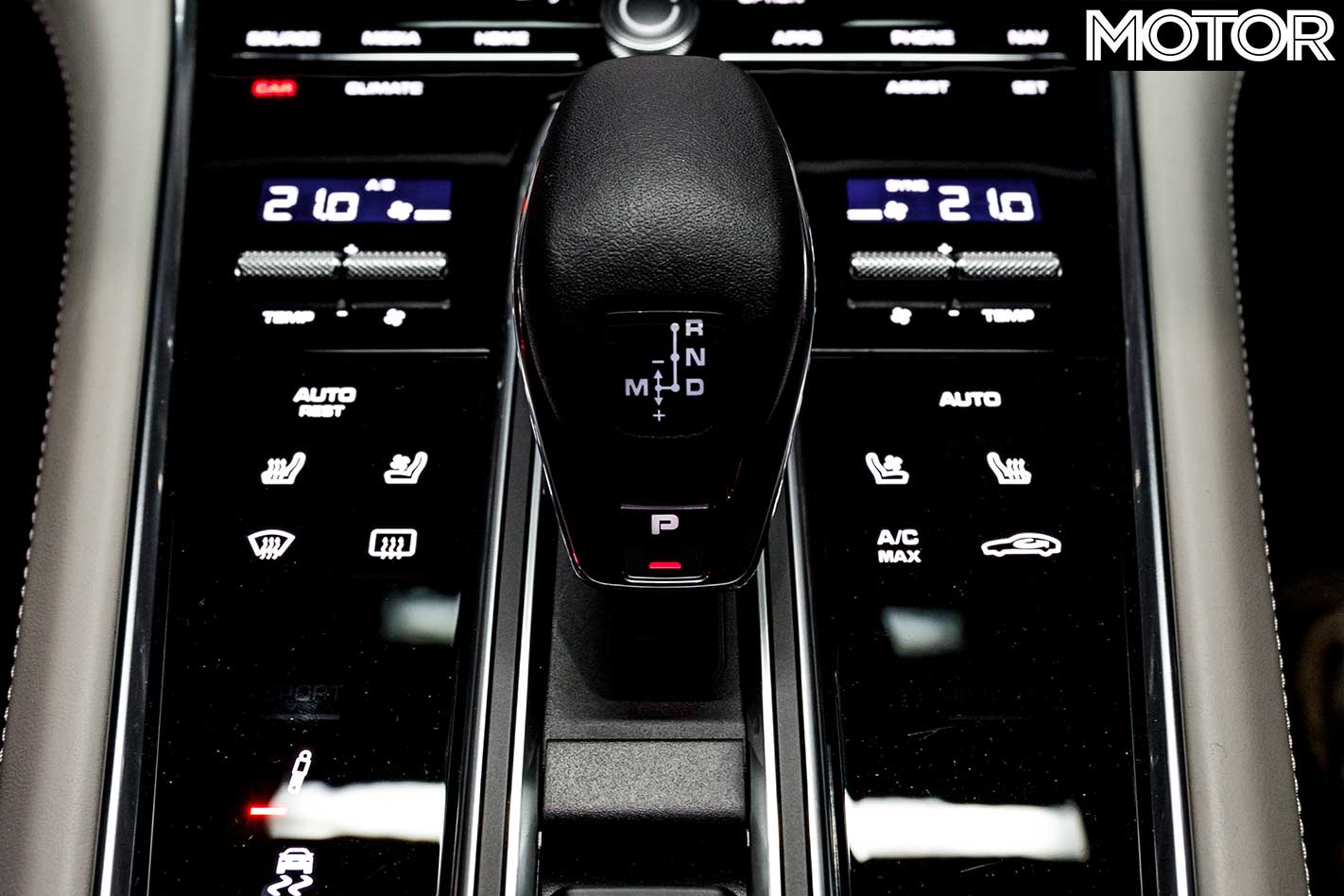
Unusually, given their intended roles, the transmissions in both cars work better at maximum attack than in day-to-day duties, neither able to replicate the low-speed smoothness of a torque converter auto. The Porsche’s hiccups are occasional but the Merc’s are frequent, its stop-start stumbles unbecoming in a car this expensive.
As you might expect, the Porsche is also the sharper steer. It may carry more kilograms, but it supports them with far more rubber, its Pirelli P Zeros measuring 275/35 front and 315/30 rear, 20 and 30mm wider respectively than the Continental ContiSportContact 5Ps beneath the S63. It’s too big to shrink around you and always feels heavy, especially at speed, but traction is supreme and in almost all circumstances grip is strong enough to commit to corners with confidence.
All-wheel steering, not fitted to our test car, would be an asset, particularly in tighter turns, but the rear-biased all-wheel drive system dictates that corners are usually exited with a touch of oversteer rather than understeer anyway. A special mention to the brakes, too, which work incredibly hard stopping this much mass yet resist fade admirably.
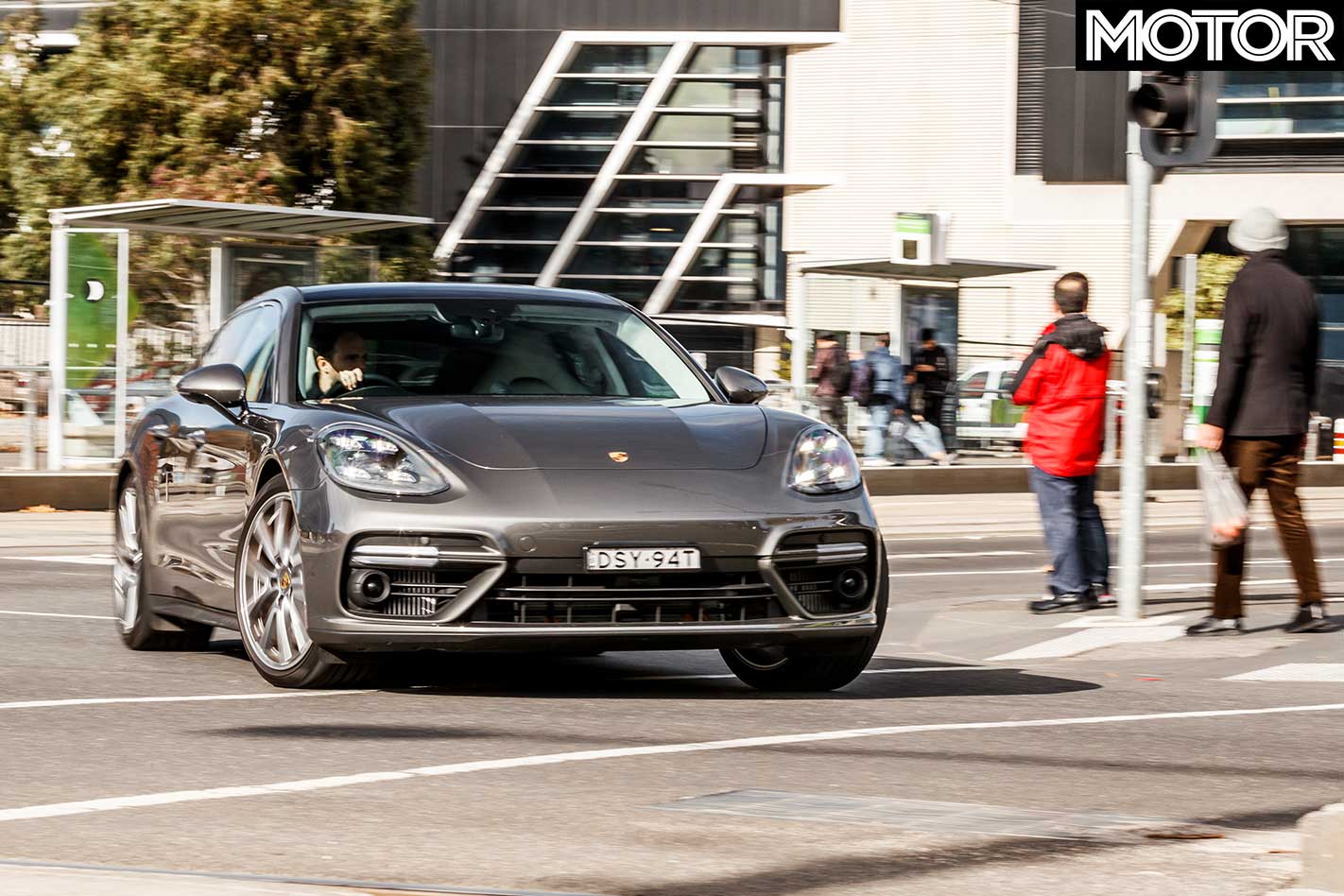
Yet it’s not all champagne and roses: the weighty steering is very accurate but surprisingly mute, especially in slippery conditions when you need it to speak loudest; by and large the Panamera rides beautifully with excellent body control, but a series of small amplitude bumps – a patch of rippled tarmac, for instance – causes a slight shimmy particularly at the rear.
In the dry this is of no real concern, but in the wet there’s the feeling the car has momentarily relinquished its purchase on the road for a heart-stopping moment or two.
The final flaw is largely philosophical: the ESP can’t be completely disengaged. There’s probably wisdom in preventing a two-tonne missile being punted entirely without electronic assistance, but the idea of a Porsche that won’t let the driver fly solo is anathema.
As usual, the ESP tuning is excellent and doesn’t ever hinder progress, but PSM Sport isn’t as lenient as it is in Porsche’s sports cars and even with the system ‘off’ it’s continually nibbling away at the edges.
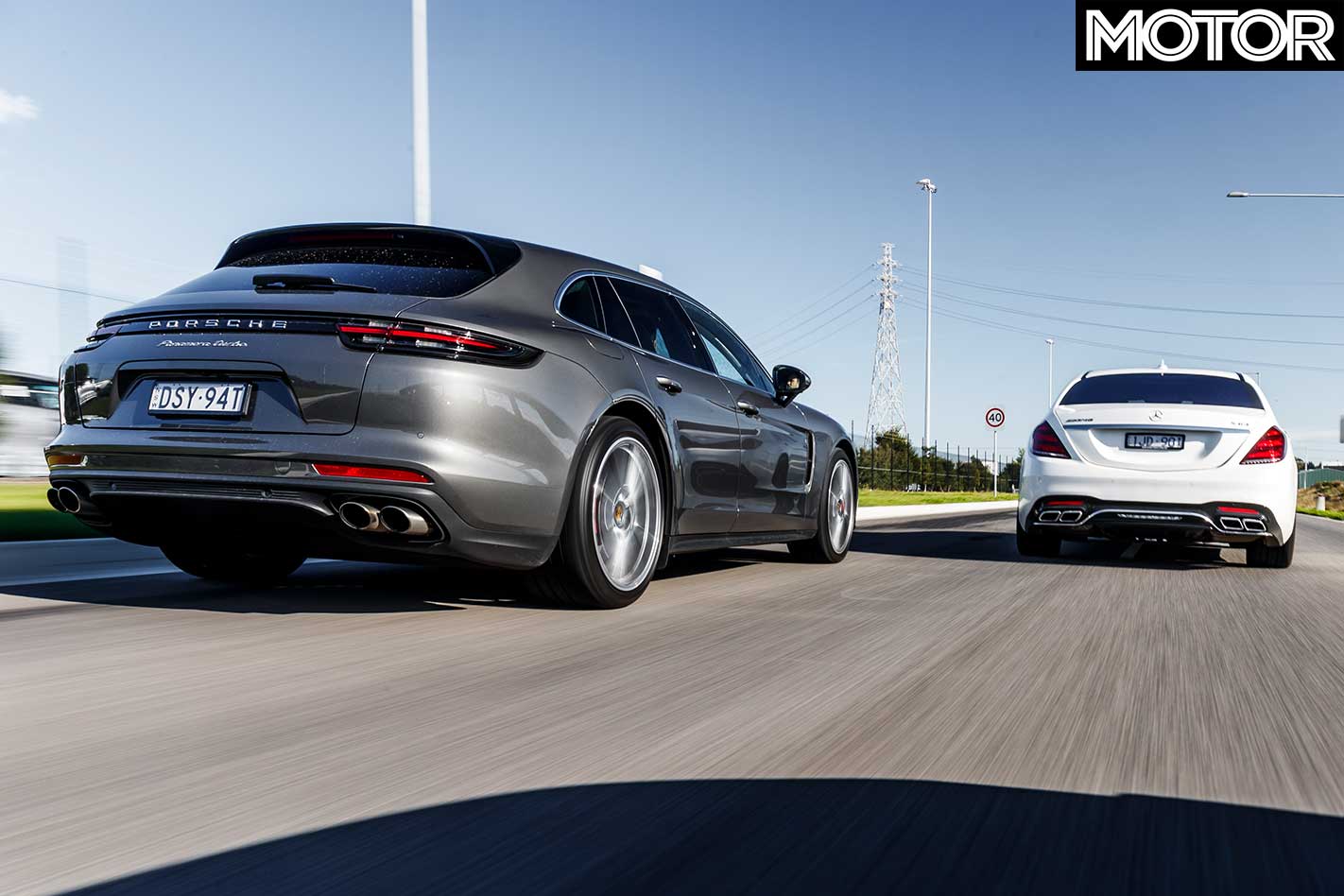
This would be far less of an issue if the Panamera Turbo didn’t feel so keen to play. Drive is sent primarily to the rear at corner exit, but at the very moment the chassis wants to show you what it can really do, the health and safety police show up and say “careful, you might hurt yourself”.
Internet research suggests the Panamera will hold a powerslide, which implies, like the Cayman and Boxster, you can drive through the electronics. This might be fine on a racetrack, but on the road the Porsche isn’t as much fun as it could be, nor as much fun as its predecessor.
With rain falling heavily against the windscreen, the Mercedes might be a bit too much fun. Wet or dry, the S63 is nothing like as composed as the Panamera.
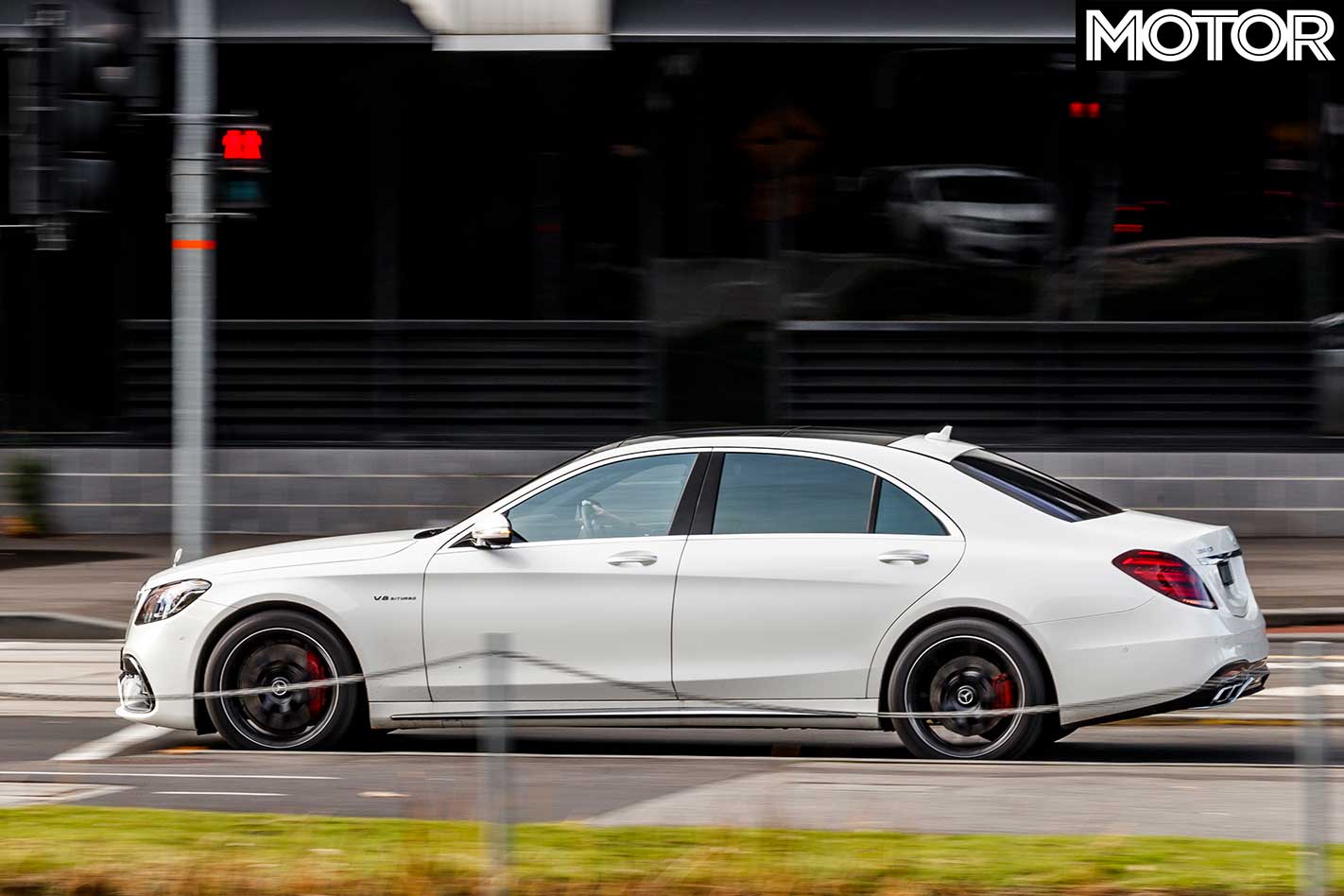
Compared to the Porsche, it feels like it has to be driven on eggshells. There’s more body roll, exacerbated because you sit so much higher in the driver’s seat, the extra 200mm of length (all in the wheelbase) makes the rear end feel as though it’s entering a corner just as the front is exiting and the brakes are spongier and only become more so the more you lean on them. The steering offers more feedback than the Porsche but weights up inconsistently with lock applied and with no LSD you’re constantly battling inside wheelspin.
Nonetheless, in terms of driver engagement, the Mercedes is the more enjoyable car, at least on our wet, slippery test roads. The Porsche is… one-dimensional is too strong, but drive within the available grip and you’re likely to go very quickly without much fuss. You have to work harder to extract the speed in the S63, which could be a plus or a minus depending on your point of view.
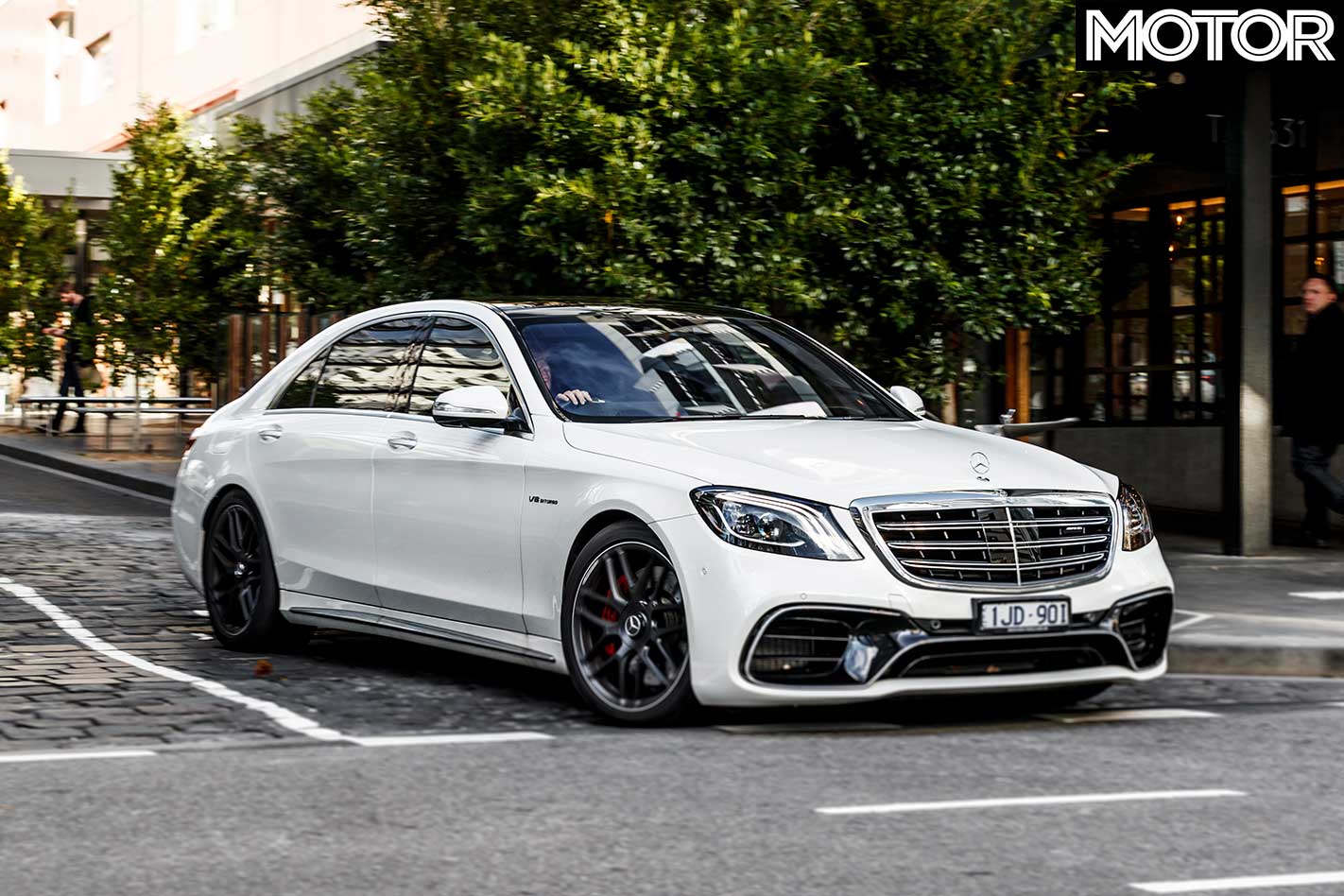
Two things are certain: with an LSD the S63 would be a tyre-killing riot and in left-hand drive 4MATIC guise it must be an absolute rocketship. Even as it is, it’s difficult to imagine any S63 owner knows just how competent their limousine is when driven with enthusiasm.
Most S63s will spend their lives wafting discreetly through the inner city. There’s something about the Merc’s sheer length and blacked-out wheels and windows which is quite menacing; I’m not suggesting it’s the ideal set of wheels for a Russian mobster, just that it could conceivably be on the shortlist of men with names like Dimitry or Vladislav.
The AMG’s palatial rear seats are the perfect place to do business, reputable or otherwise; there’s no more relaxing place to travel than in the back of an S-Class. Not that the driver is hard done by. Merc’s super-clever cruise control allows the S63 to effectively drive itself on the highway and the latest generation infotainment is much more user friendly, the touch control buttons on the steering wheel working particularly well.
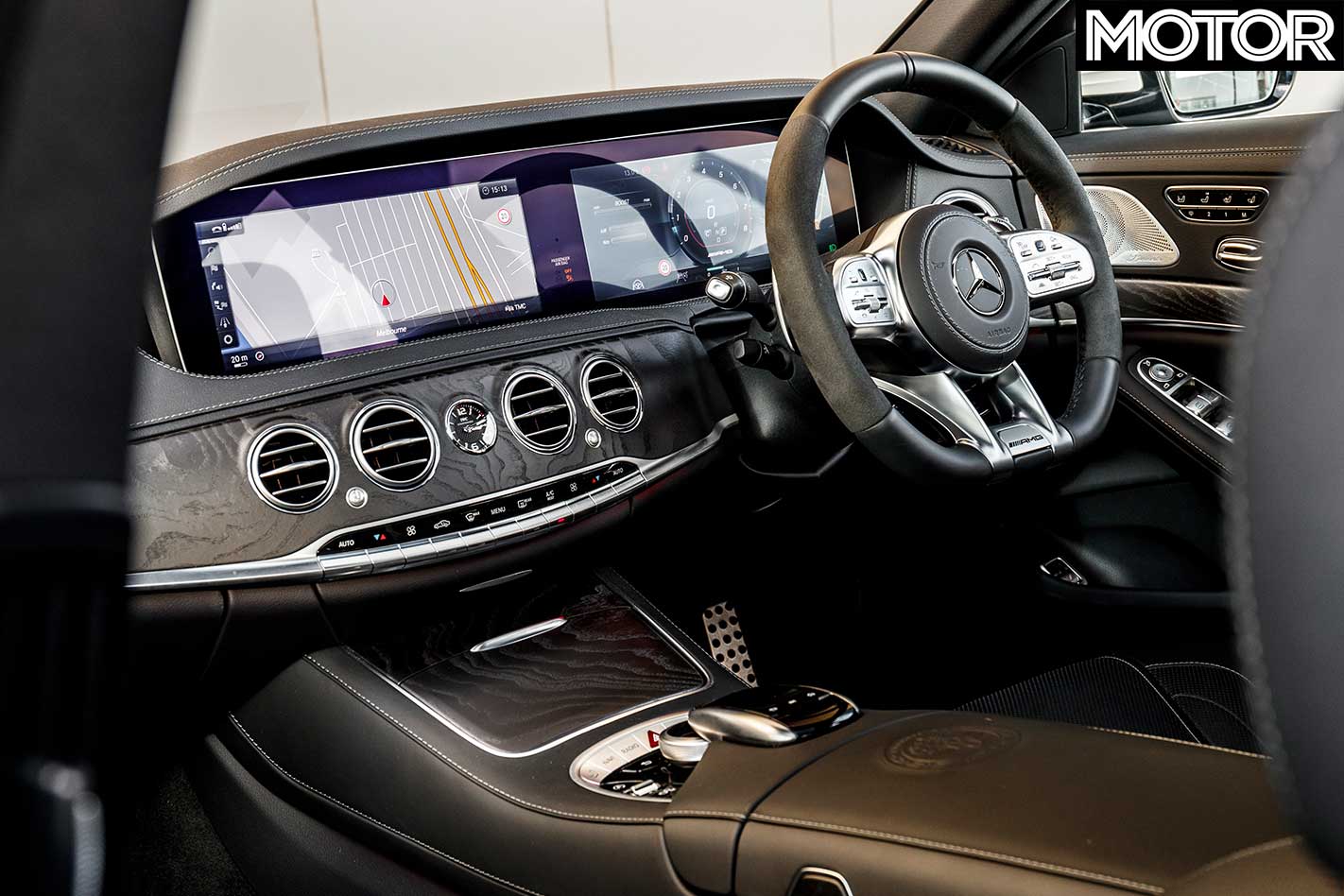
The Panamera’s interior isn’t as flashy as the S63’s, but it’s an utter masterpiece. There’s no textured wood, pillowy headrests or colourful lighting, just brilliantly logical design and a sense of bulletproof build quality.
The ergonomics are spot-on: the buttons engage with the most satisfying click, operating the infotainment will be second nature to anyone with a smartphone and the instruments are the perfect blend of tradition (central analogue tacho) and technology (configurable screens either side). Unlike the Mercedes, the driver is the focus in the Porsche; the rear is for transporting people, not impressing them.

Which neatly sums up what separates these two: it’s the difference between competence and character. At the risk of stating the obvious, the S63 feels like a hotted-up limousine. In trying to marry luxury and lunacy and give an S-Class real driver appeal – which it undoubtedly has – AMG had to sacrifice some of the refinement that makes Merc’s limo such a tranquil place to be. For our money, the 463kW/1000Nm V12 Maybach S650 better marries the goals of space with pace.
The Panamera feels less conflicted. Like the S63, the Turbo Sport Turismo is a wicked-up variant of a more regular model, but even a base Panamera is designed to involve the driver, not isolate them. The Porsche is objectively the better car: it’s quicker, more capable and easier to drive hard, yet, perhaps unexpectedly, equals the S63 in its ride and refinement.
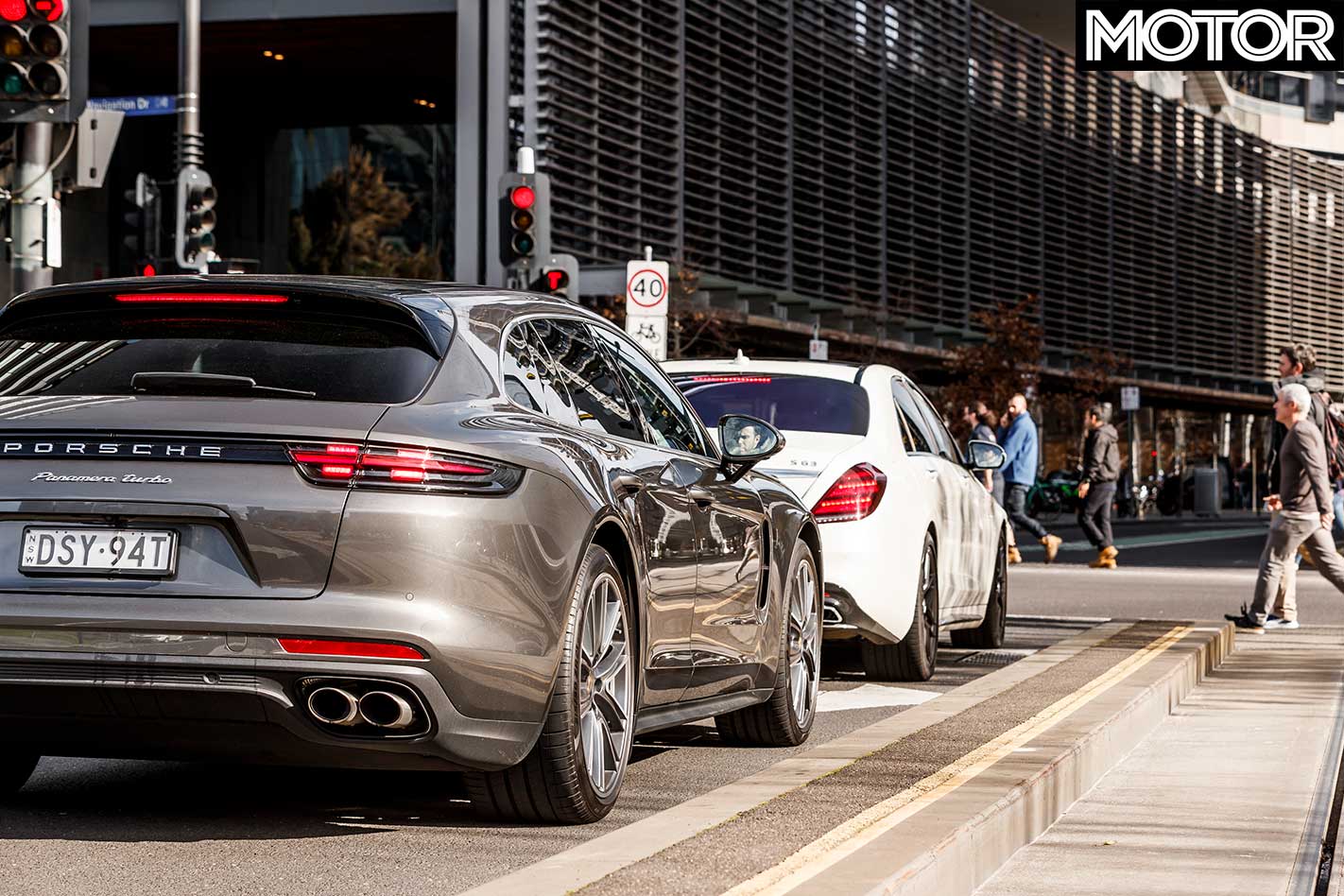
Combine this ability with room for kids and the dog and you have the ultimate money-no-object family car, albeit one that needs a bit more aggro. That might sound irrational, but rationale disappeared about $250,000 ago.
Five good reasons to pick the Mercedes-AMG S63 L
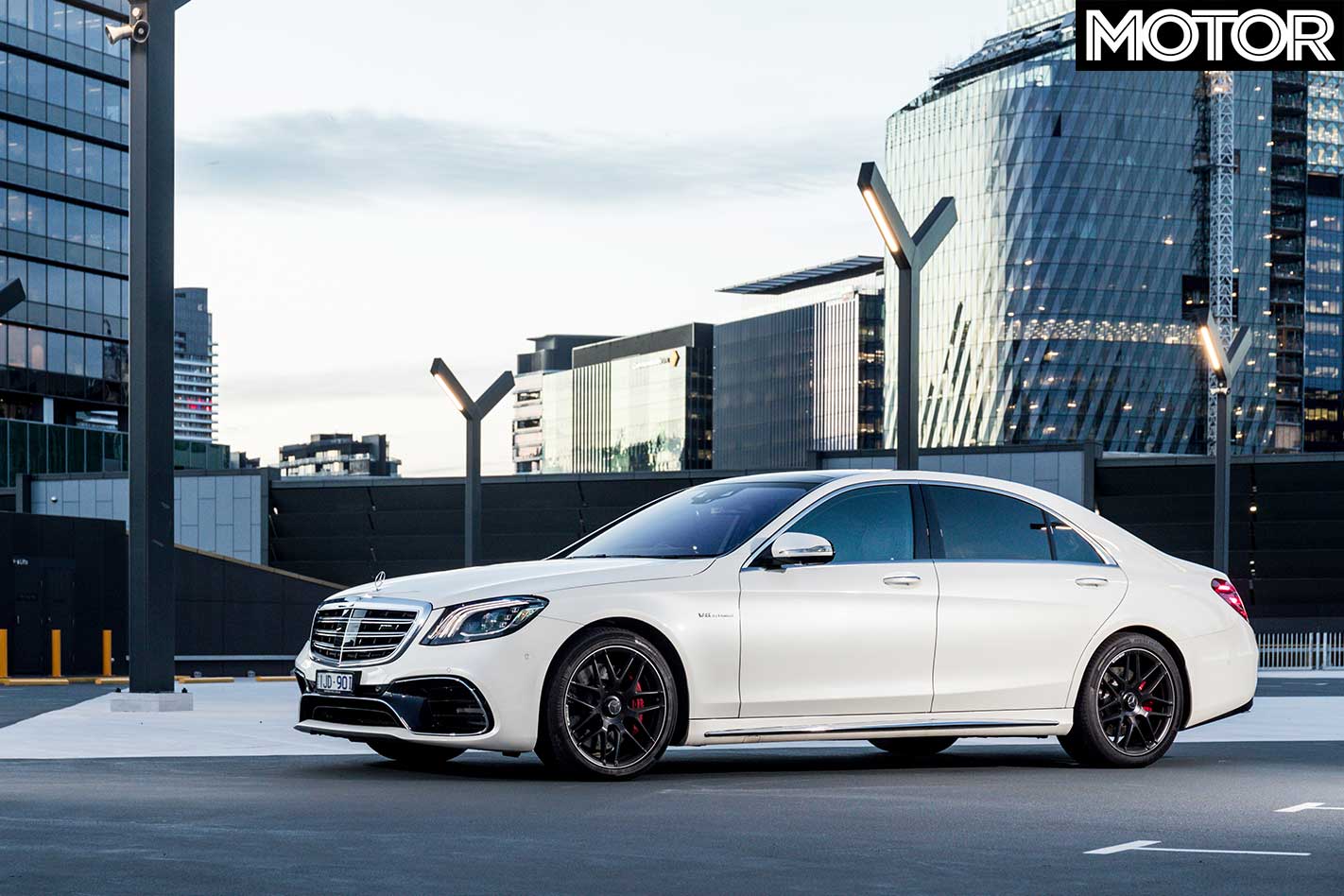
1 – New V8 offers limitless power and acceleration – and a NASCAR soundtrack. Yet it can mooch along on four cylinders if circumstances dictate 2 – We’re not really a fan of driver assistance systems, but having the S63 virtually drive itself on the highway is very relaxing on a long trip 3 – The back seat is so opulent it would be no hardship to hang out there of an evening with a movie and a chilled beverage of your choice 4 – When you drive a car that’s almost 5.3m long you garner a certain respect from passers-by and other road users – you’ve made it 5 – Take the S63 down a wet twisty road and you’ll have more fun than you could possibly imagine. Sadly, the lack of LSD frustrates in the dry
Five good reasons to pick the Porsche Panamera Turbo Sport Turismo

1 – Surprising and scaring your passengers with random, unannounced launch control starts would never get old – for the driver, anyway 2 – If you need to be somewhere a long way away in a hurry, regardless of weather, there are few tools better for the job than the Panamera Turbo 3 – Wagon practicality makes the Sport Turismo the king of the school run, allowing you to look down – metaphorically – on the SUV brigade 4 – Once you’ve dropped the kids off, you can go to a racetrack and round up supercars until it’s time to pick up the rugrats again 5 – Interior is a truly special place. There’s little glitz or glamour but everything reeks of quality and the driving position is perfect
Fast Facts

| u00a0 | Mercedes-AMG S63 L | Porsche Panamera Turbo Sport Turismo |
| Body | 4-door, 4-seat sedan | 5-door, 4-seat hatch |
| Drive | rear-wheel | all-wheel |
| Engine | 3982cc V8, DOHC, 32v, twin-turbo | 3996cc V8, DOHC, 32v, twin-turbo |
| Bore x Stroke | 83.0 x 92.0mm | 86.0 x 86.0mm |
| Compression | 8.6:1 | 10.1:1 |
| Power | 450kW @ 5500-6000rpm | 404kW @ 5750-6000rpm |
| Torque | 900Nm @ 2750-4500rpm | 770Nm @ 1960-4500rpm |
| Power/Weight | 228kW/tonne | 199kW/tonne |
| Transmission | 9-speed wet-clutch auto | 8-speed dual-clutch |
| Weight | 1970kg | 2035kg |
| Suspension | multi-links, air springs, adaptive dampers, anti-roll bar (f/r) | double-wishbone, air springs, adaptive dampers, anti-roll bar (f); multi-links, air springs, adaptive dampers, anti-roll bar (r) |
| L/W/h | 5287/1915/1499mm | 5049/1937/1432mm |
| Wheelbase | 3165mm | 2950mm |
| Tracks | 1630/1644mm (f/r) | 1657/1639mm (f/r) |
| Steering | electrically-assisted rack-and-pinion | |
| Brakes (f) | 390mm ventilated/drilled discs, 6-piston calipers | 410mm ventilated discs, 6-piston calipers |
| Brakes (r) | 360mm ventilated/drilled discs, single-piston calipers | 380mm ventilated discs, 4-piston calipers |
| Wheels | 20.0 x 8.5-inch (f); 20 x 9.5-inch (r) | 21.0 x 9.5-inch (f); 21 x 11.5-inch (r) |
| Tyre Sizes | 255/40 R20 (f); 285/35 R20 (r) | 275/35 ZR21 (f); 315/30 ZR21 (r) |
| Tyres | Continental ContiSportContact 5P | Pirelli P Zero |
| Price | $375,000 ($382,000 as tested) | $390,700 ($415,670 as tested) |
| Pros | Brutal engine; surprising agility; rear seats | Crazy speed; gorgeous interior; wagons are cool |
| Cons | No LSD; gearbox stumbles; inconsistent steering | Heavy; electronic overkill; should be louder |
| Rating | 4 out of 5 stars | 4 ouf ot 5 stars |
The Strip
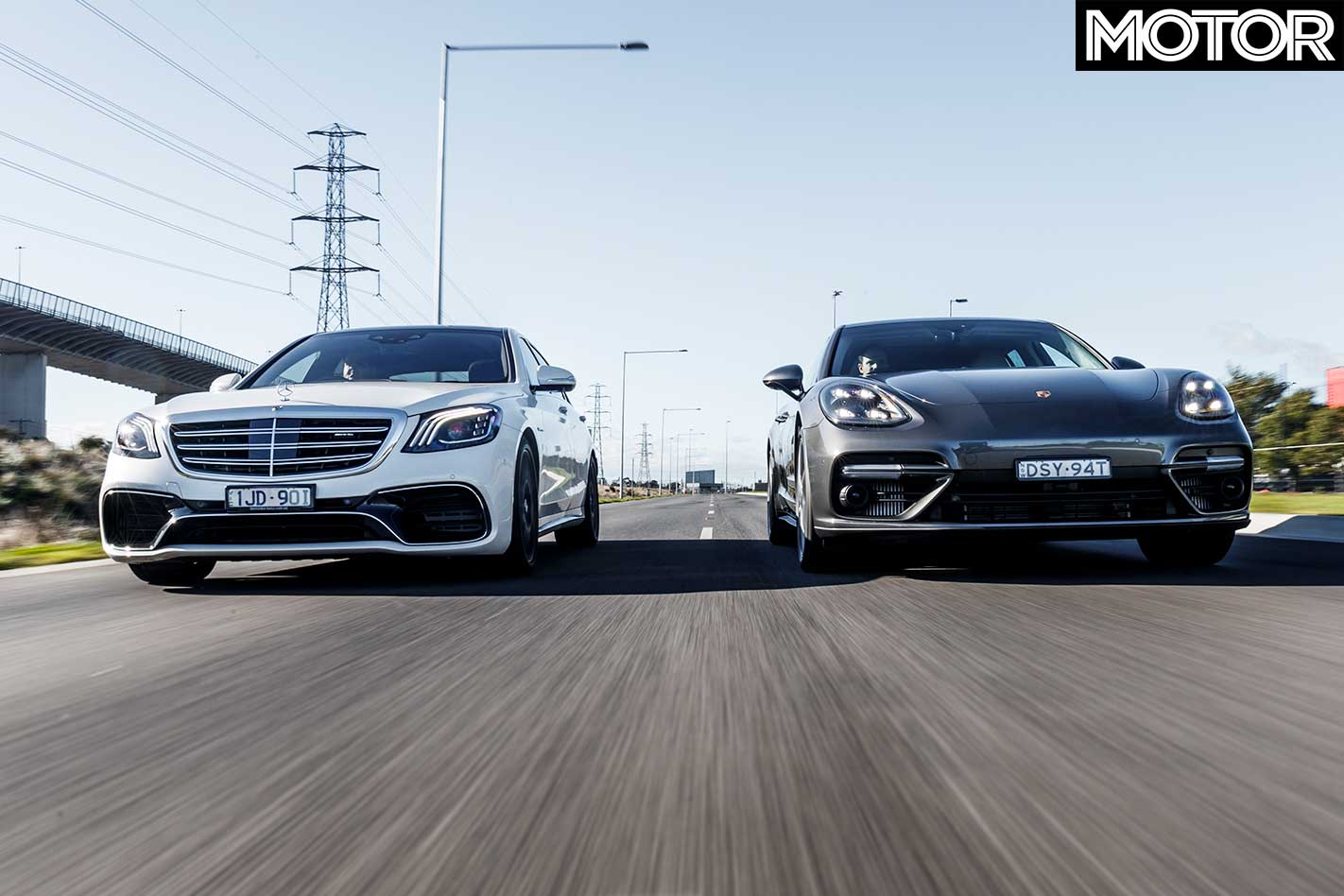
| u00a0 | Mercedes-AMG S63 L | Porsche Panamera Turbo Sport Turismo | |
| 0-10km/h | 0.40sec | 0.22sec | |
| 0-20km/h | 0.79sec | 0.49sec | |
| 0-30km/h | 1.17sec | 0.75sec | |
| 0-40km/h | 1.54sec | 1.02sec | |
| 0-50km/h | 1.99sec | 1.34sec | |
| 0-60km/h | 2.41sec | 1.65sec | |
| 0-70km/h | 2.83sec | 2.00sec | |
| 0-80km/h | 3.23sec | 2.41sec | |
| 0-90km/h | 3.67sec | 2.87sec | |
| 0-100km/h | 4.18sec | 3.38sec | |
| 0-110km/h | 4.74sec | 3.95sec | |
| 0-120km/h | 5.30sec | 4.53sec | |
| 0-130km/h | 5.93sec | 5.18sec | |
| 0-140km/h | 6.66sec | 5.96sec | |
| 0-150km/h | 7.43sec | 6.87sec | |
| 0-160km/h | 8.24sec | 7.81sec | |
| 0-170km/h | 9.10sec | 8.76sec | |
| 0-180km/h | 10.04sec | 9.81sec | |
| 0-190km/h | 11.04sec | 10.95sec | |
| 0-200km/h | 12.25sec | 12.35sec | |
| 0-400m | 12.04sec @ 198.22km/h | 11.49sec @ 193.88km/h | |
| 80-120km/h (Drive) | 2.0sec | 2.1sec | |
| 100-0km/h | 36.48m | 34.78m | |
| Speed in Gears | |||
| 1st | 62km/h @ 7000rpm | 49km/h @ 6800rpm | |
| 2nd | 102km/h @ 7000rpm | 91km/h @ 6800rpm | |
| 3rd | 147km/h @ 7000rpm | 141km/h @ 6800rpm | |
| 4th | 202km/h @ 7000rpm | 207km/h @ 6800rpm | |
| 5th | 274km/h @ 7000rpm | 280km/h @ 6800rpm | |
| 6th | 300km/h @ 6340rpm* | 304km/h @ 5900rpm* | |
| 7th | 300km/h @ 5450rpm* | 304km/h @ 4780rpm* | |
| 8th | 300km/h @ 4560rpm* | 304km/h @ 3730rpm* | |
| 9th | 300km/h @ 3800rpm* | – | |
Heathcote Raceway, 18˚C, dry. Driver: Scott Newman *Manufacturer’s claim Official timing supplier – VBOX Australia


